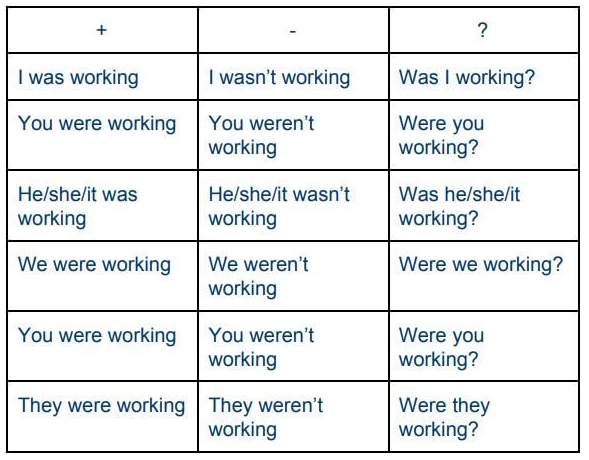Using The Past Continuous Tense in English
The past continuous is one of main tenses used to describe situations in the past in English. When and how do you use it? Read on to find out!
The Past Continuous
Knowing how to use the past continuous allows you to enrich your descriptions of the past, especially when you’re telling a story and want to go into detail about what happened.
How to form the past continuous
We form the past continuous by using the simple past form of the verb ‘to be’ – was/were – and the main verb in the -ing form. For example,
“You were reading a book.”
To make questions we invert the auxiliary verb was/were and the subject:
“Were you reading a book?”
And to make negative forms we add ‘not’:
“You weren’t reading a book.”
Here is a table with a complete set of examples:

The short answer form is Yes, I was./No, I wasn’t.
So when do we use the past continuous? There are two main uses of this past tense:
1) Describing an action at a particular time in the past
At 4 p.m. I was reading a book.
This means that the action of reading started before 4 p.m. and continued at that time. Here are some other examples:
What were you doing at 12:30?
We were having lunch at 12:30.
Jana was still sitting in the classroom at 5 p.m.
The children were having tea at 4:30 p.m.
The traffic wasn’t moving at all at 8 a.m.
2) Comparing two finished actions in the past
When I arrived, the children were waiting for me.
This means that the children started to wait and the action continued when I arrived. Here are some other examples:
I was falling asleep when I heard a noise downstairs.
They were just going onto the motorway when they got a flat tire.
Was it raining when you went out?
Mrs Evans was making a phone call when we went into her office.
Past continuous or past simple?
If you’re describing a sequence of actions that happened in chronological order, use the simple past. For example,
I got up, had a shower then went downstairs for breakfast.
If you want to give some details to help the listener picture a situation more clearly, use the past continuous. For example,
When I went into the kitchen, my brother was making some bacon and eggs.
The past continuous is a very useful tense and, as you can see, not difficult to create and introduce to your speech. Have a go at the quiz at the top of this post to practice now.
The best way to learn this tense along with other English forms is to do a structured course. At Wall Street English you can learn how to use all the English tenses in a fun and practical way, through listening and speaking. Find out more information on the Our Courses page.
The passive form is a very useful structure in English. Read more to find out what it means and how to use it in your everyday English.
A guide about all of time adverbs so you can start to use them more easily when you speak and write.